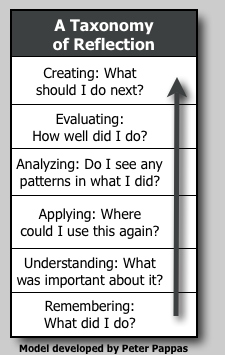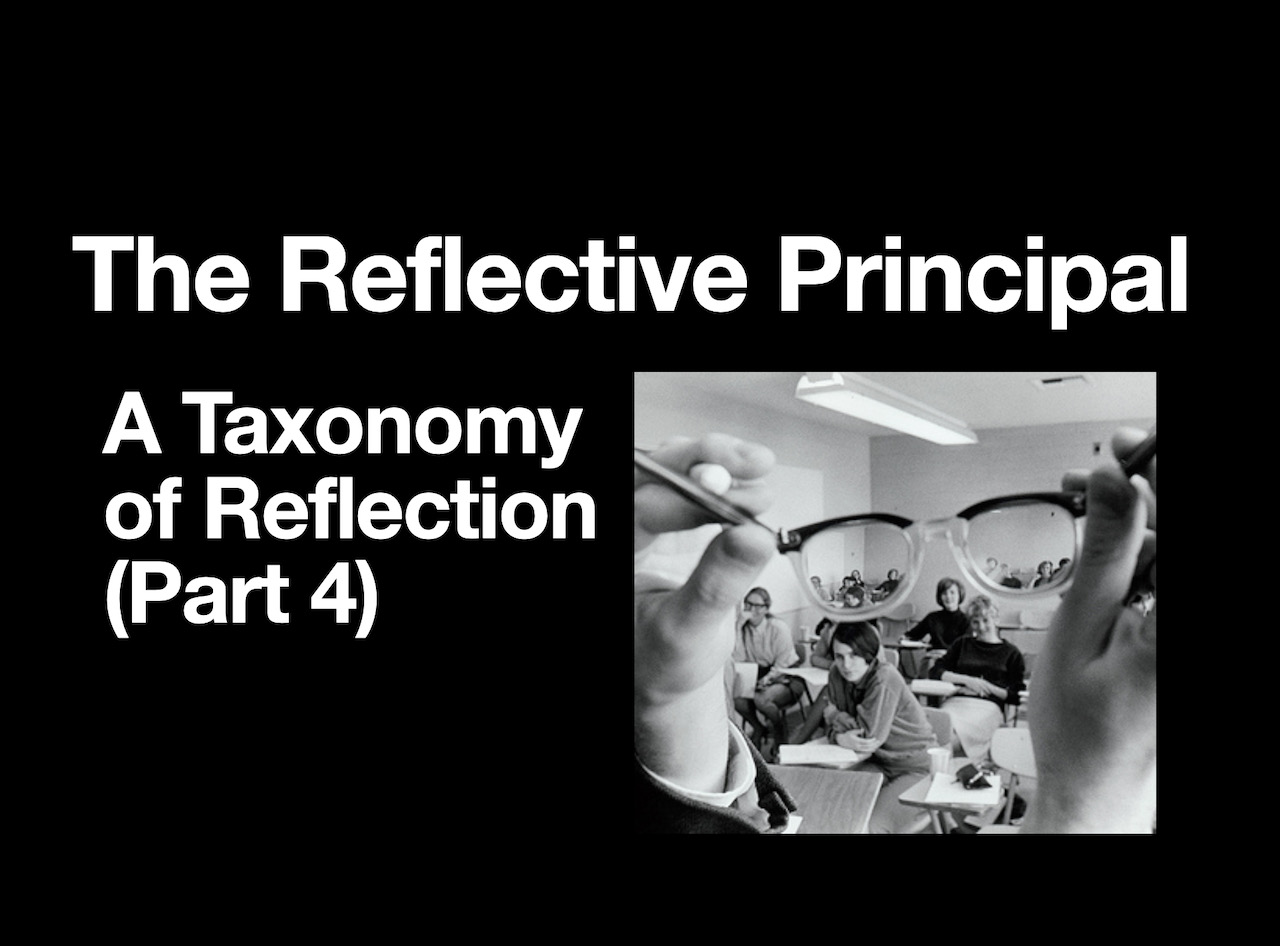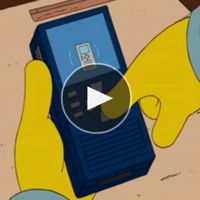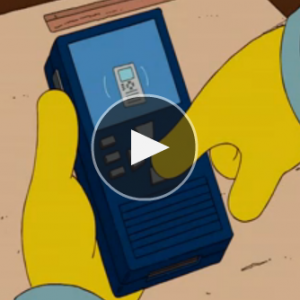Reflection can be a challenging endeavor. It’s not something that’s fostered in school – typically someone else tells you how you’re doing! Principals (and instructional leaders) are often so caught up in the meeting the demands of the day, that they rarely have the luxury to muse on how things went. Self-assessment is clouded by the need to meet competing demands from multiple stakeholders.
In an effort to help schools become more reflective learning environments, I’ve developed this “Taxonomy of Reflection” – modeled on Bloom’s approach. It’s posted in four installments:
1. A Taxonomy of Reflection
2. The Reflective Student
3. The Reflective Teacher
4. The Reflective Principal
See my Prezi tour of the Taxonomy
It’s very much a work in progress, and I invite your comments and suggestions. I’m especially interested in whether you think the parallel construction to Bloom holds up through each of the three examples – student, teacher, and principal. I think we have something to learn from each perspective. I think each can contribute to realization of the new Common Core standards.
4. The Reflective Principal
Each level of reflection is structured to parallel Bloom’s taxonomy. (See installment 1 for more on the model) Assume that a principal (or instructional leader) looked back on an initiative (or program, decision, project, etc) they have just implemented. What sample questions might they ask themselves as they move from lower to higher order reflection? (Note: I’m not suggesting that all questions are asked after every initiative – feel free to pick a few that work for you.)

taxonomy of reflection
Bloom’s Remembering: What did I do?
Principal Reflection: What role did I play in implementing this program? What role did others play? What steps did I take? Is the program now operational and being implemented? Was it completed on time? Are assessment measures in place?
Bloom’s Understanding: What was important about what I did? Did I meet my goals?
Principal Reflection: What are the the major components of the program? How do they connect with building / district goals? Is the program in compliance with federal / state / local mandates? Will it satisfy relevant contracts? Is it within budget? Is the program meeting it’s stated goals?
Bloom’s Application: When did I do this before? Where could I use this again?
Principal Reflection: Did I utilize lessons learned earlier in my career? Did I build on the approaches used in previous initiatives? Will the same organizational framework or plan for implementation meet the needs of another program or project? How could my interaction with one stakeholder group be modified for use with others?
Bloom’s Analysis: Do I see any patterns or relationships in what I did?
Principal Reflection: Were the implementation strategies I used effective for this situation? Do I see any patterns in how I approached the initiative – such as timetable, communications, input from stakeholders? Do I see patterns in my leadership style – for example do I over-promise, stall when I need to make a tough decision? What were the results of the approach I used – was it effective, or could I have eliminated or reorganized steps?
Bloom’s Evaluation: How well did I do? What worked? What do I need to improve?
Principal Reflection: What are we doing and is it important? Does the data show that some aspects of the program are more effective than others? What corrective measures might we take? Were the needs of all stakeholders met? In a larger context, is the organization improving its capacity for improvement? Were some aspects of my leadership approach more effective than others? What have I learned about my strengths and my areas in need of improvement? How am I progressing as a leader?
Bloom’s Creation: What should I do next? What’s my plan / design?
Principal Reflection: What did I learn from this initiative and how would I incorporate the best aspects of my experience in the future? What changes would I make to correct areas in need of improvement? Given our experience with this project, how would I address our next challenge? Have I effectively helped our school forge a shared vision of teaching and learning? And has it served as the foundation of this plan? If this project will hold teachers more accountable for student performance, how am I meeting my responsibilities to provide the inputs they need for success? How can I best use my strengths to improve? What steps should I take or resources should I use to meet my challenges? Is there training or networking that would help me meet my professional goals? What suggestions do I have for my stakeholders, supervisors or peers to foster greater collaboration?



 Recently my post:
Recently my post: 
